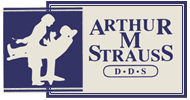Articles - Your Health Magazine, March 2009
Vision and Impaired Oral Function
Part 2
Chronic forward head posture is so prevalent in our society that automobile manufacturers have moved head rests to a more forward position. Over time the body tries to compensate for this posture in order to maintain direct vision. According to research by Cailliet, to maintain direct vision, the head must often be extended, increasing the forward curvature of the neck. This results in compression of the discs in the spinal column and causes the neck muscles to be in a state of constant contraction. The resulting muscle spasms and stress upon the joints transfer in all directions, causing local pain and radiating pain.
The typical solution for this is to attempt to upright a posture that the body has adapted to appropriately manage the airway for “ease of breathing”. Unfortunately, the improved posture now impairs “ease of breathing”. According to the work of Farrand C. Robson, DDS, now the body must rely on the other compensatory mechanisms for managing the throat and “ease of breathing”, namely shifting to a “fight or flight” state and/or clenching and grinding of the teeth.
This “flight or flight” reaction negatively impacts the regulatory system of the body by excessive secretion of adrenaline and related stress hormones that directly increase activity in the cardiovascular system and nervous system, and impact other systems including the immune, digestive and reproductive systems.
Clenching is the underlying cause of most TMJ (temporomandibular joint) disorders. It stiffens the muscles in the tongue and associated muscles in the throat. This is described as the “jaw-tongue reflex” that opens the throat and allows greater “ease of breathing”. Grinding moves the lower jaw forward, pulling the tongue forward with it and out of the throat. This is the basis of design function of mandibular repositioning appliances used to treat sleep apnea.
The negative impact of clenching and grinding includes TMJ complications, migraine type headaches, cracked teeth, wearing of teeth and improper bite.
Balancing an uneven bite in a “grinder” helps reduce the stress on the teeth and jaws but it does not alter the body’s need to grind or clench as does balancing the jaw-tongue relationship to a state of “ease of breathing “ where the body’s need for clenching and grinding no longer exists.
So, from my perspective:
Vision influences the head to tilt/tip up.
The position and curvature of the spine is influenced to allow ease of breathing.
The tongue posture and position dictates the shape and size of the throat.
The size, shape and contours of the inside of the mouth, jaws and teeth control the muscle tone, posture and position of the tongue.
Heredity and environmental influences impact all of this.
So, in conclusion, it is my position that it is more advantageous to balance the jaw-tongue relationship than the bite when treating breathing problems.
